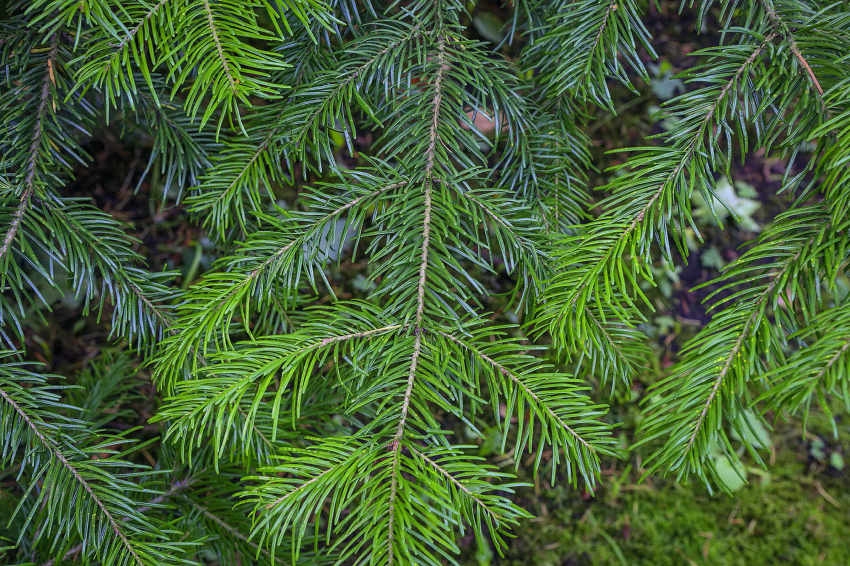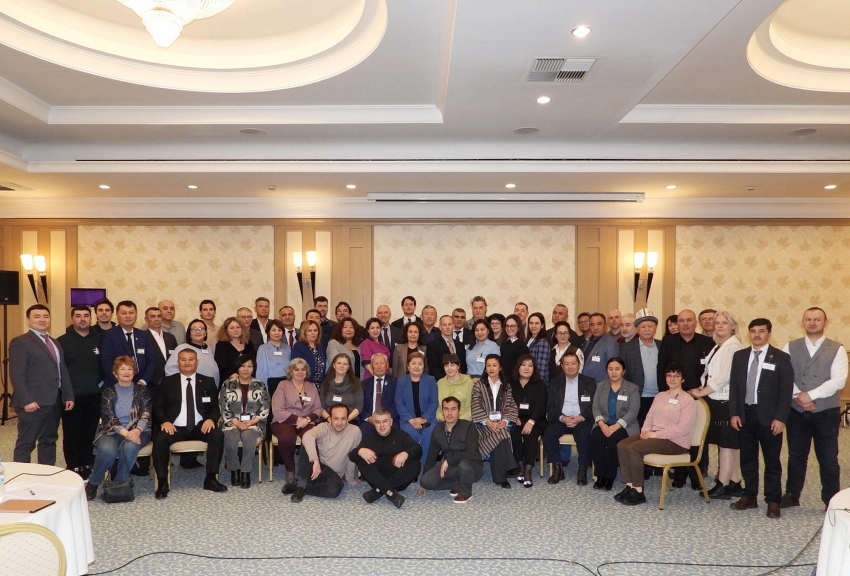RED BOOK: KGZ08 Talas Key Biodiversity Area
Species that initiated the designation of KBA [and other species that are at risk of global extinction, which are present in KBA, but the compliance of which is not confirmed by the global criteria of KBA]: Leuciscus Lindbergi, Dzihunia Turdakov), Triplophysa coniptera).
Lindsberg’s dace (Leuciscus lindbergi)
Local names: sorga, Sibirian roach, sorozhka, Schmidt’s dace.
Range: In Kyrgyzstan, it is distributed in the Talas river basin from the lower reaches up to the mountains. In full-flowing years, it forms significant aggregations in Kirov reservoir, built on the Talas River. It inhabits fast-flowing, low-flowing and stagnant water bodies within its range, including some salt lakes, for example, Ashchikol and Kyzylkol Lakes (Kazakhstan). It is found up to the lower reaches in the Talas River, including Kazota enclosed lakes. There are species in the Ters, Assa, Aschibulak rivers and their tributaries, in Ters-Ashibulak reservoir and in the Biylikol and Akkol lakes.
Description. Dorsal fin II-III 7 (8), anal III 8-9 rays; 45-55 scales in the lateral line, 9-15 gill rakers on the first gill arch. Lindsberg’s dace differs from the Kirghiz dace in smaller scales, fewer branched rays in the anal and pectoral fins. Reaches 15-16 cm in length, weight – 60-70 g.
Biology: Spawning of Lindsberg’s dace takes place from mid-March to April. The dace is an omnivorous fish. There are components of both plant and animal origin (remains of higher plants, erow silk, detritus flakes, flying and water insects, larvae of chironomids, mayflies, caddis worms, etc.) in its diet in summer season. Sometimes there are small fish (chars, gudgeons) in its intestine.
By the second half of summer, food spectrum of the dace narrows, two components begin to predominate in its diet - plant remains and flying insects. From the end of July to the beginning of August, the aggregation of fattening dace shoals increases. In warm calm weather in the late afternoon, the dace is observed to approach to the shores for fattening.
Threats: Currently, number of this species is small and it has lost commercial importance. The reason for this is sharp shallowing of lakes due to water withdrawal for agriculture needs. Currently it serves as an object of amateur fishery.
Source: Fish of Kirghizia: [Protection and Reproduction] / I. A. Pivnev. - Frunze: Kyrgyzstan, 1990.
Source of image: https://www.fishing.kz/forums/xz-articles/elec-talasskij.104/
Turdakov's Char (Dzihunia turdakovi)
Systematics: Dzihunia Genus (Near Asian chars), Hillstream (river) loachs (Balitoridae) Family
Dzihunia has 3 char-like fish: D.ilan (Turdakov, 1936), D.amudajensis (Rass, 1929), D.turdakovi (Prokofiev, 2003)
Range: They live in rivers of Kyrgyzstan and Kazakhstan, in particular in the basin of the Amudarya and Zeravshan rivers.
Family Description:
There is very little information on these fish; it is known only that they live in very limited regions, even within the same river only in exactly defined places. They grow from 7 to 16 cm.
Source: http://biotopfish.com/genus/rod-dzihunia-peredneaziatskie-golcy
Terek stone loach (Triplophysa coniptera)
Range: Terek stone loach (Triplophysa coniptera) was described by Turdakov (1954) from the Talas river basin (including small rivers flowing from the eastern slopes of Karatau range and currently do not reach streambed of the Talas river in its lower reaches), as well as from the Arys River and Salar feed ditch (aryk) near Tashkent, belonging to the Chirchik river system (basin of the middle course of the Syrdarya river).
General description: The body is sub-cylindrical in the anterior part, but compressed in the part of caudal peduncle (tail stalk), having an elliptical shape in cross section. Caudal peduncle (tail stalk) is equal to or shorter than the head, its smallest height contains 2.2–4.1 times in its length; head length is 4-5 times contains in body length; maximum body height - 5.7-8.1 times. Snout length is comparable to the postorbital length of the head.
Distal edge of the dorsal fin is notched (forked), its first two branched rays are in some way elongated and form a distinct lobe; paired fins are long and narrow, with pointed tips; the tip of pectoral fin is formed by the second and third or third branched rays; caudal fin is deeply notched (forked). Dii-iii(iv), 7; Л (L) ii-iii, 5; P i, 10-11; V i, (6)7(8). Anal orifice is separated from the beginning of the anal base by a distance not exceeding the orbit diameter.
Coloration: small dark spots on body sides and an anteroposterior row of larger spots along lateral line on a yellowish background, usually fusing in variable degrees; dark transverse stripes on the back are absent or present. Peritoneum is from brown or black-brown color to intense black.
Maximum known body length is up to 80 mm; they reach sexual maturity at a body length of 50 mm.
Males are with two clusters on each side of the head (above and below the infraorbital canal) of fine-grained tubercles, tightly fused to the epidermis, forming brush-like structures spaced apart from each other, and clusters of the same structure on three outer rays of pectoral fins, which are widened and thickened. There are numerous small-scattered tubercles, which are absent or weakly expressed in young fish, everywhere on the head, as well as on body sides and around pectoral fins bases in both sexes. Edges of the upper and lower brush-like clusters on the head sides are widely separated and distinctly spaced apart from the infraorbital canal, which is thus clearly visible.
Source: https://naukarus.com/morfologiya-i-rodstvennye-otnosheniya-goltsa-triplophysa-coniptera-teleostei-balitoridae-nemacheilinae











